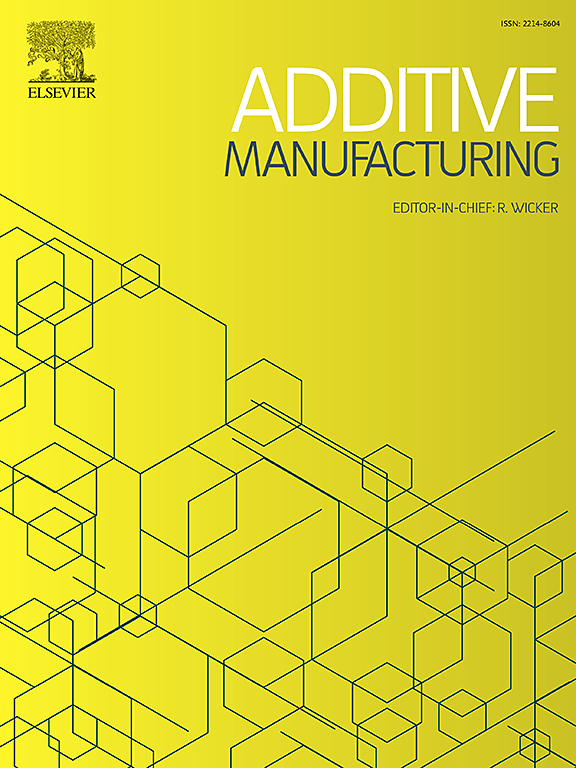Investigating thermal strains and chemical shrinkage in tomographic volumetric additive manufacturing
IF 11.1
1区 工程技术
Q1 ENGINEERING, MANUFACTURING
引用次数: 0
Abstract
Volumetric additive manufacturing provides many advantages over more traditional layer-based additive manufacturing methods by permitting support-free printing with isotropic material properties. However, accurate geometry reproduction remains a challenge. This work presents two models to investigate the contributions of thermal strains and chemical shrinkage to parts made via tomographic volumetric additive manufacturing. A thermal model, with invariant material properties and uniform cure progression, reproduces similar magnitude deformations to those seen experimentally. Through a parameter study and partial least squares regression, for a target cube geometry, deformations are found to be dominated by the heat transfer coefficient. A second model investigates non-uniform chemical shrinkage predicting smaller deformations but better capturing the deformed shape. This work concludes that a combination of primarily thermal strains and secondarily chemical shrinkage is thus required to capture this geometric infidelity paving the way to better understanding the deformation phenomena.
研究层析体积增材制造中的热应变和化学收缩
体积增材制造与传统的基于层的增材制造方法相比具有许多优点,因为它允许具有各向同性材料特性的无支撑打印。然而,精确的几何图形再现仍然是一个挑战。这项工作提出了两个模型来研究热应变和化学收缩对通过层析体积增材制造制造的零件的贡献。具有恒定材料特性和均匀固化过程的热模型再现了与实验中看到的相似的大小变形。通过参数研究和偏最小二乘回归,发现对于目标立方体几何,变形受传热系数的支配。第二个模型研究非均匀化学收缩,预测较小的变形,但更好地捕捉变形形状。这项工作的结论是,因此需要主要的热应变和次要的化学收缩的组合来捕捉这种几何不忠,为更好地理解变形现象铺平道路。
本文章由计算机程序翻译,如有差异,请以英文原文为准。
求助全文
约1分钟内获得全文
求助全文
来源期刊

Additive manufacturing
Materials Science-General Materials Science
CiteScore
19.80
自引率
12.70%
发文量
648
审稿时长
35 days
期刊介绍:
Additive Manufacturing stands as a peer-reviewed journal dedicated to delivering high-quality research papers and reviews in the field of additive manufacturing, serving both academia and industry leaders. The journal's objective is to recognize the innovative essence of additive manufacturing and its diverse applications, providing a comprehensive overview of current developments and future prospects.
The transformative potential of additive manufacturing technologies in product design and manufacturing is poised to disrupt traditional approaches. In response to this paradigm shift, a distinctive and comprehensive publication outlet was essential. Additive Manufacturing fulfills this need, offering a platform for engineers, materials scientists, and practitioners across academia and various industries to document and share innovations in these evolving technologies.
 求助内容:
求助内容: 应助结果提醒方式:
应助结果提醒方式:


